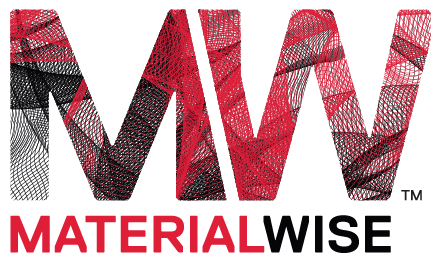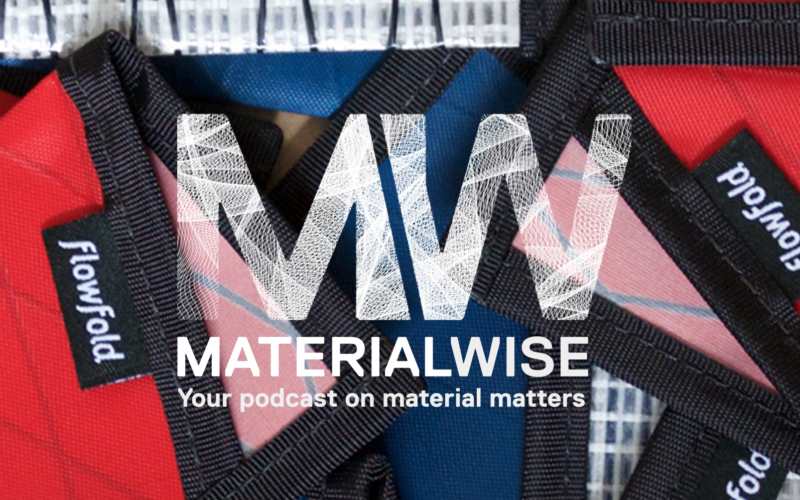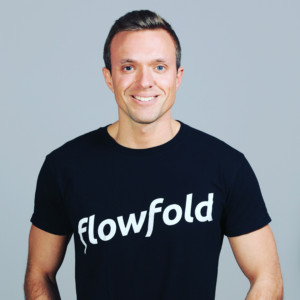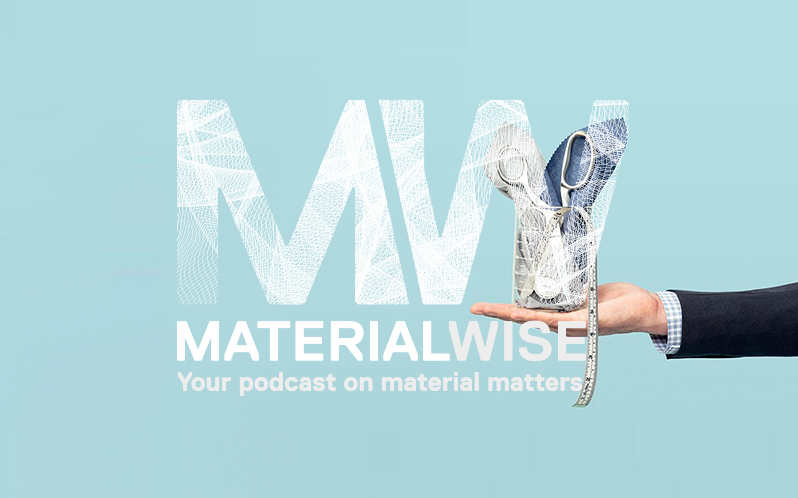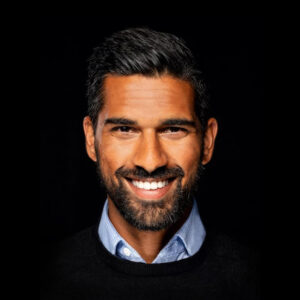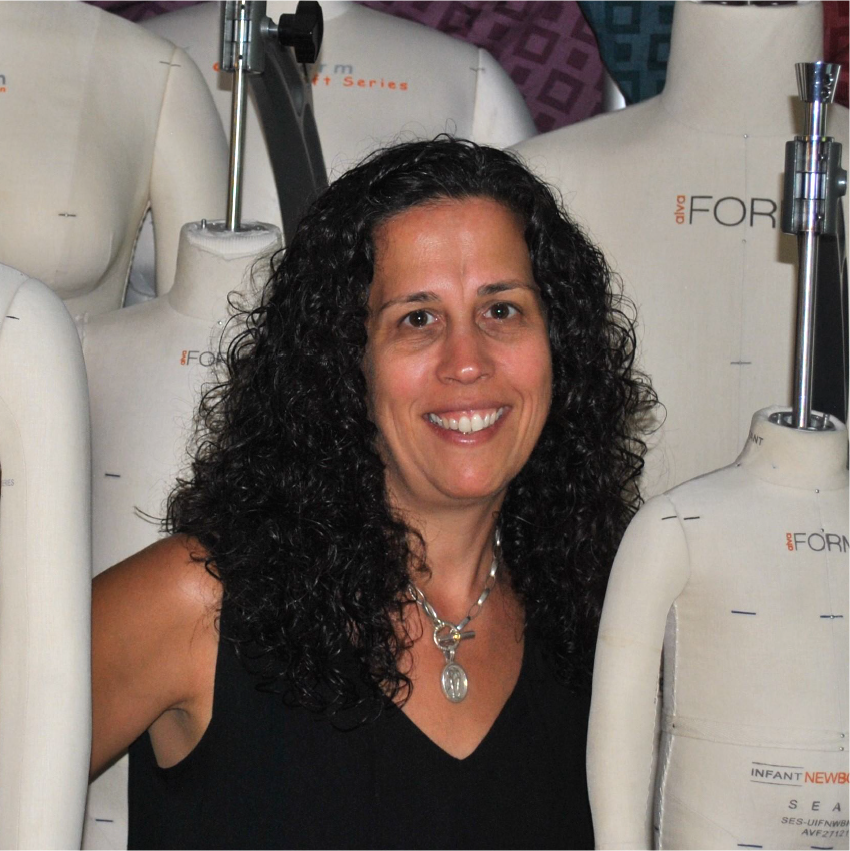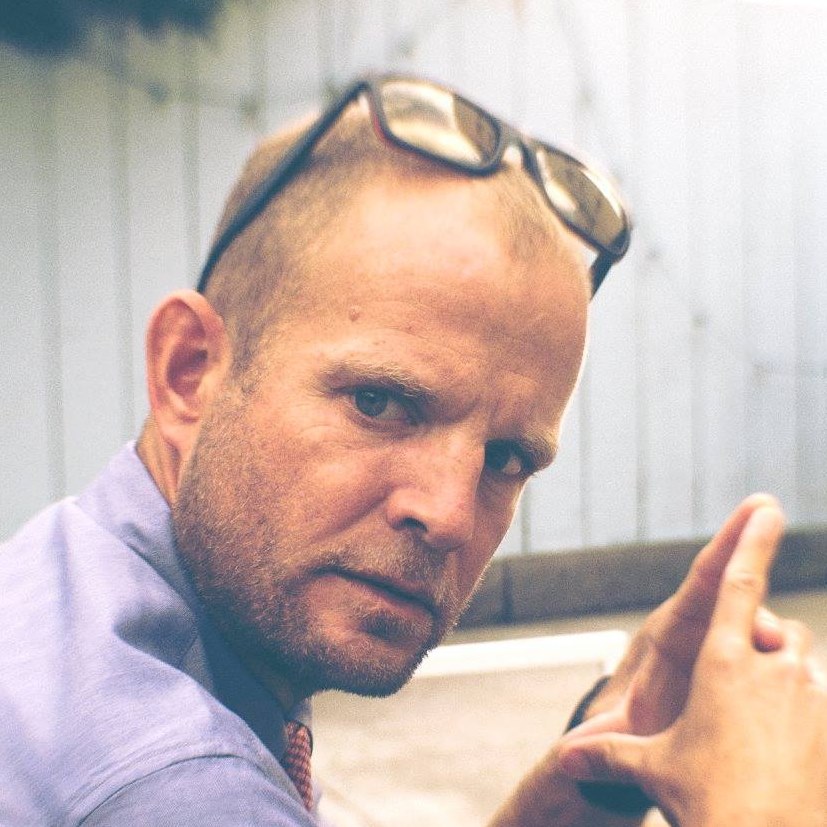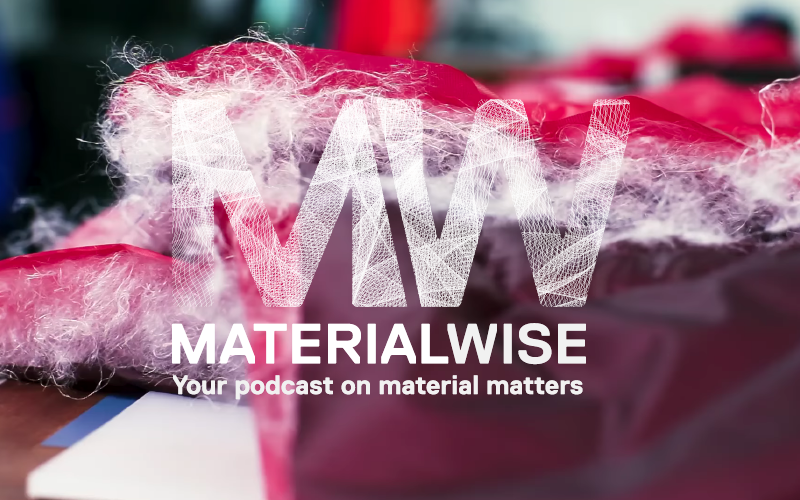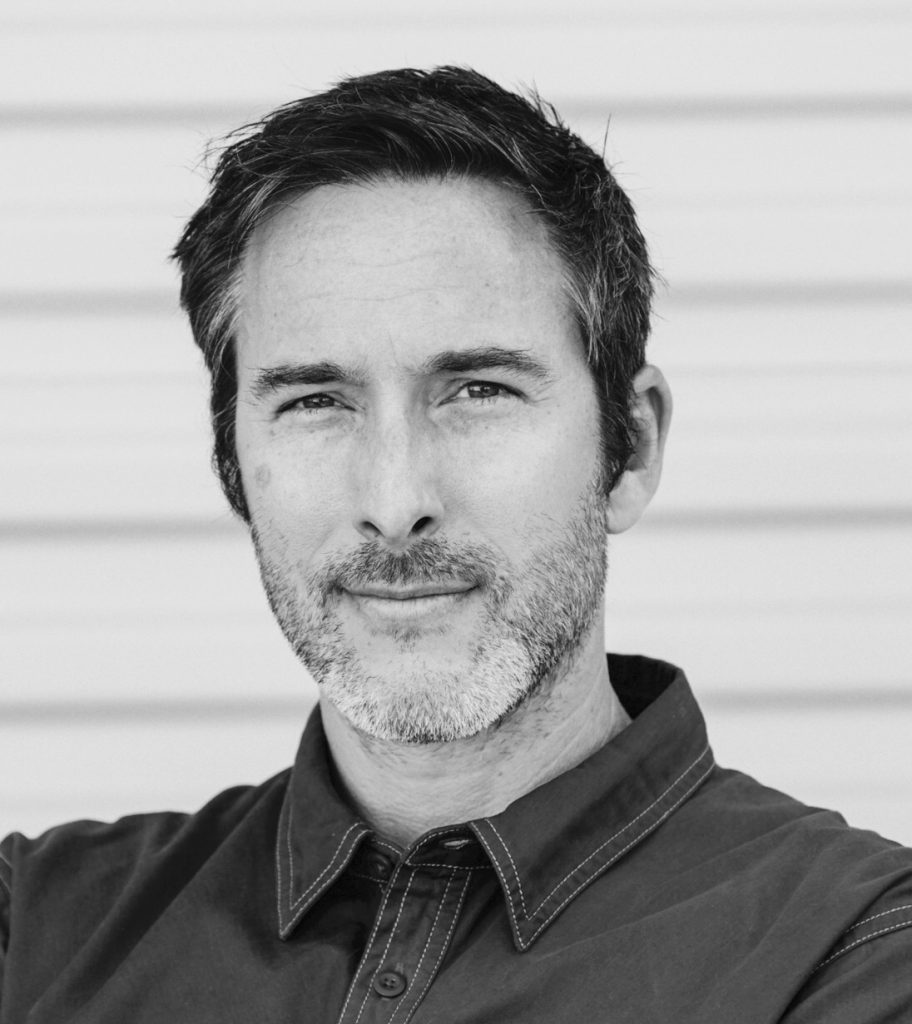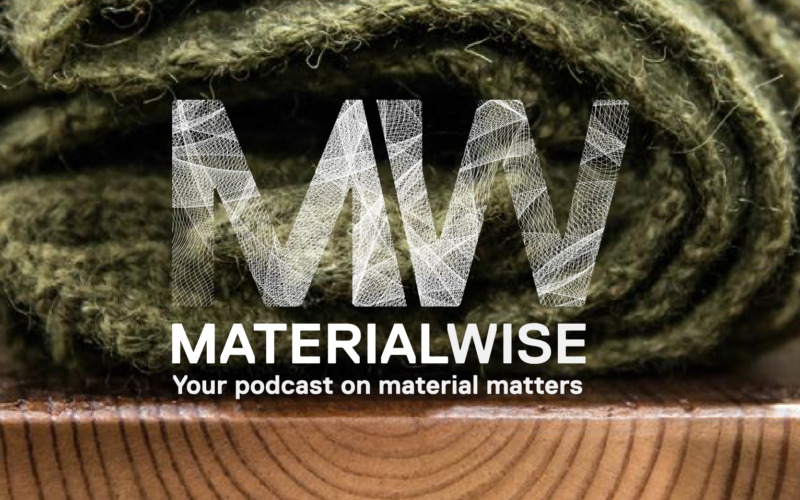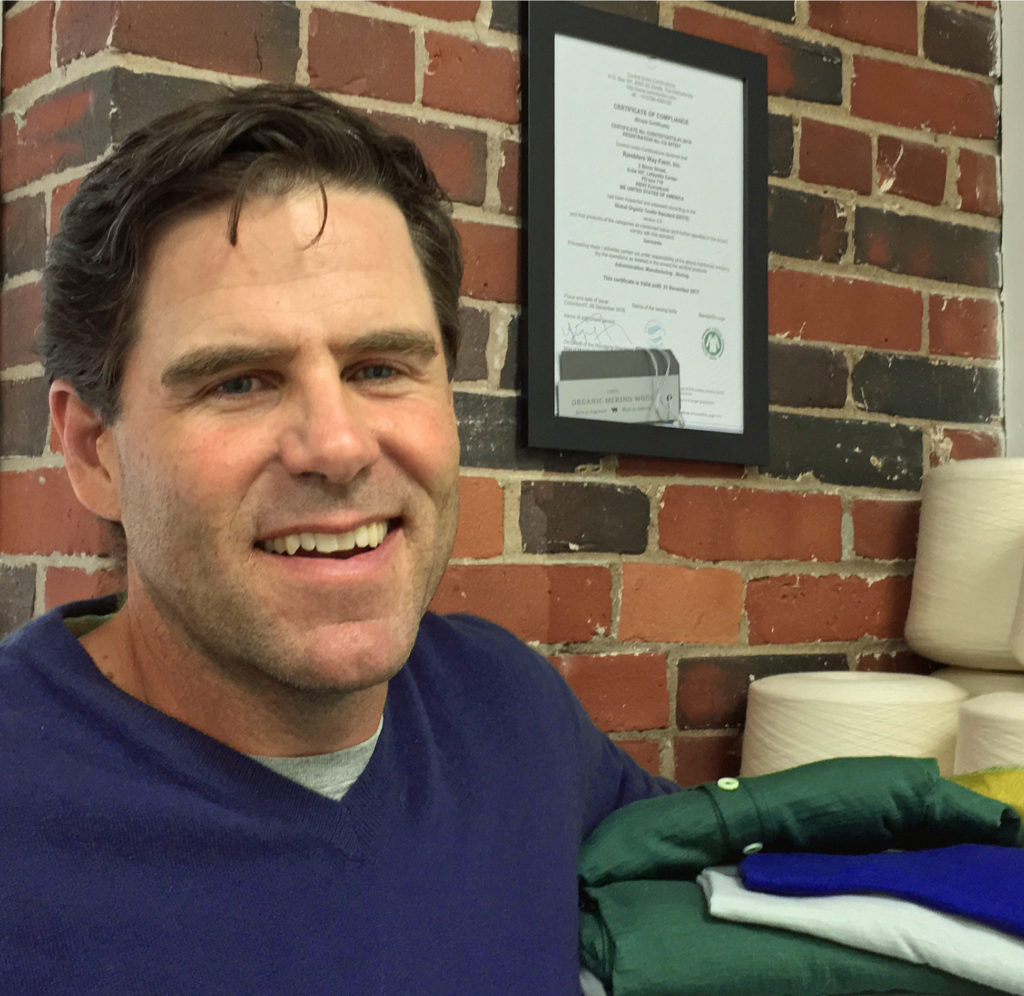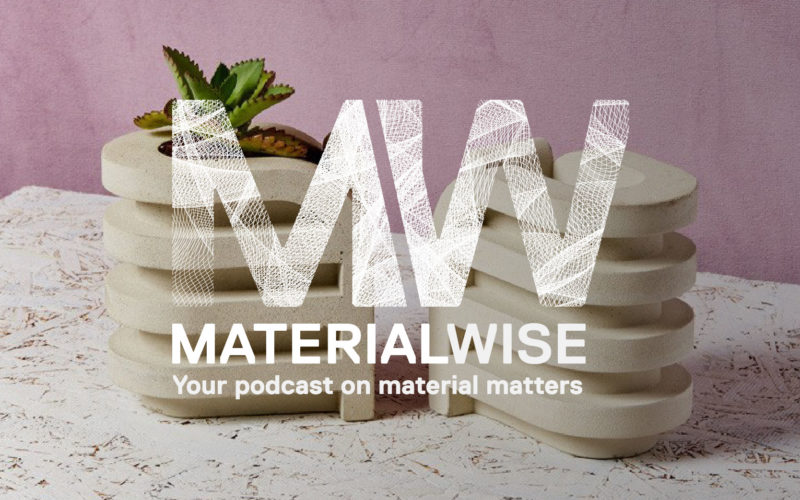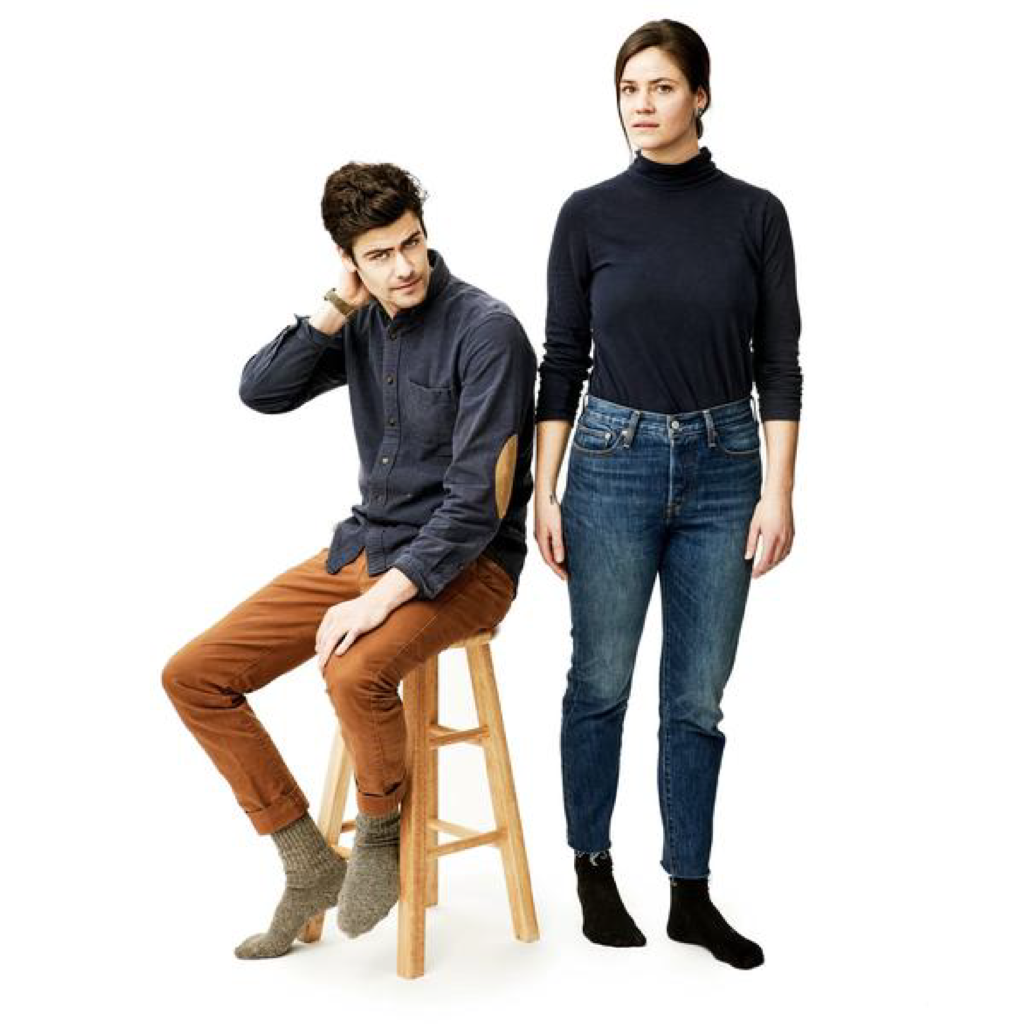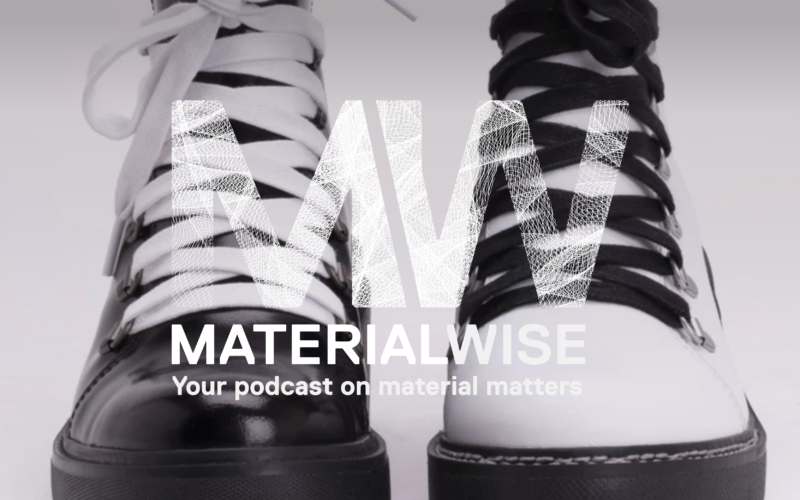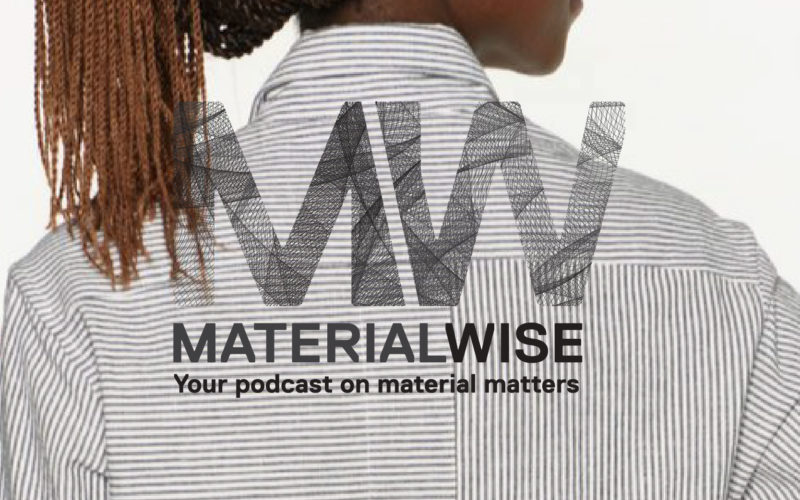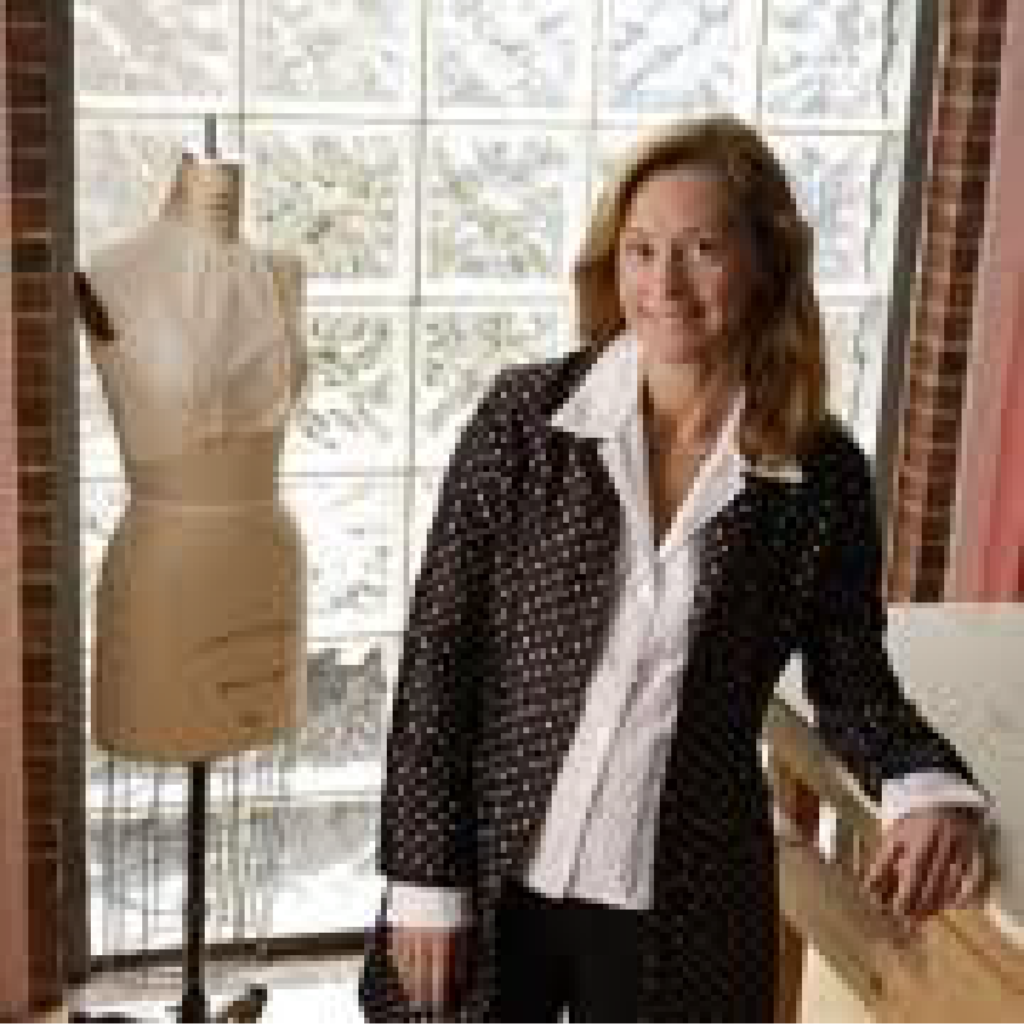Episode 14: James Morin | Flowfold
James Morin on how a small Maine-based company turned into an international brand
James Morin, COO and president of sales for Flowfold – a brand of minimalist gear made with some of the strongest and lightest of weight materials – gives us insight on how he’s helped build a small Maine-based company into an international brand. In this episode of Material Wise, James shares how he and his team have formed collaborative partnerships with suppliers, retailers, ambassadors, and non-profits to make Flowfold the thriving company it is today.
James’ Interview Transcript
Nancy: Hello, I’m Nancy Fendler, and you’re listening to Material Wise, your podcast on material matters. It’s my chance to talk to designers, product developers and other guests about what inspires them to create. Why and how they select the materials they choose, and the relationships they’ve built with their customers and industry.
My guest today is James Morin, Chief Operating Officer and President of Sales, at Flowfold – a brand of minimalist gear made of some of the world’s strongest and lightest materials entirely made in the USA. James joined college friends and Flowfold co-founders, Charley Friedman and Devin McNeill in 2016 to help propel the then Maine-based craft-style company into a full-blown commercial operation. Flowfold got its start in 2010 when Charley, who was working in a sail loft at the time, stole scraps of racing sail cloth out of the trash to make wallets and bags that could keep up with his daily commutes by boat, bike and on foot.
After making a number of well-received products for friends and family, enough word was spread that he knew he had a good thing going. Today Flowfold’s distinctive line of wallets, backpacks, and totes – designed for everyday adventures – can be found at leading retailers across the country, and its fastest growing market, Japan. They are also sold online direct to consumer via its eCommerce site at flowfold.com.
Sustainability is built into Flowfold’s DNA and it does its part to keep materials out of landfill. Over one third of its materials are recycled and Flowfold works to cut down on material waste through smart manufacturing. The company strives to secure the most sustainable fabrics they can that are made in the USA.
James shares how Flowfold got its start and how the company has grown through successful collaborations with key partners such as L.L Bean, Japan, Maine International Trade Commission, and a slew of brand ambassadors, which all demonstrate how a small Maine-based company can become an international brand.
Nancy: James, thank you so much for being a guest on Material Wise and inviting me into your new headquarters.
James: Thanks. Excited to be on.
Nancy: Well thank you. So I’d like to start by just getting to know a little bit about you, and about how you got started. So how did you join Flowfold?
James: So, I actually met Devin and Charley who are the two co -founders of Flowfold in college at the University of Maine. And we, like a lot of your quintessential entrepreneurial stories, it was kind of broken stope type of start. Where we did it part-time and we would take time off from work and go to trade shows. And we did that for about five years, where we sold things on Amazon and then went to a couple of trade shows. And it wasn’t until 2016 that we went full time. We raised a little bit of money and went full time and that’s when I joined them, and we haven’t looked back since.
Nancy: Wow, that’s great. So, when did you say that was 10 years ago?
James: Well, gosh the LLC was officially started in 2010. So we just have our nine year anniversary in May. So May of 2020 we’ll be 10 years. But, we were a quarter million in revenue in 2016 right. It was very much a hobby. And we went … we are now, and we may talk about this kind of transforming from that craft style company to a full blown commercial company. And that’s where we are now.
Nancy: So what’s your role within the company?
James: I’m well, I mean head cook and bottle cleaner, right? I think my official title is COO and President of Sales. And Devin, Charley and I have three principles. We are all very siloed. And so, Devin kind of handles our HR, handles our books. He’s our CEO and indeed a Commander in Chief. Charley’s our Chief Innovation Officer. He handles our manufacturing and sort of procurement and resources development. And then I handle sales and operations, and really manage the key relationships, and project management around some of our initiatives that we have here.
Nancy: I see. Did you ever think that you’d be in the position you are now? I know you’re an outdoor guy.
James: No, I never did. I went to school for… I was pre-med. I was going to medical school and thank God I failed the M cats. Because I don’t think I would have been that… At 18 years old you sort of don’t know what you want to be. I mean, at 30 years old, I don’t think I know exactly what I want to be to the long-term. But, I’ve always known that I want to be a leader of people. I want to be involved in a company that really gives me a sense of fulfillment. So I didn’t know it would be here, but I feel like I’m exactly where I belong.
Nancy: That’s great to find that your hobby has become your passion, and your passion has become your business. So Flowfold’s platform is designing minimalist gear with function and durability in mind. It’s also very lightweight. Do you think this is still the trend going forward?
James: Yeah, I think minimalism is actually … probably, if you look at sort of the SEO, it’s probably trending now more than it was when we originally started the company. You look back to when Charley really kind of first started. I’m not going to say stealing, but it probably was stealing actual scrap sail cloth out of the trash can at the sail loft. He had a very simple idea. I mean, he lived on an Island in Maine and had to commute from that Island to the Maine shore every single day. And he needed gear that could kind of keep up with that. With the bike, the boat, the car, all sorts of the four seasons of weather that Maine presented.
James: And so he found a problem that he saw. Which was that the quality of products wasn’t there. And you look at a lot of the legacy brands out there right now even. But especially 10 years ago, it was this go for the summit ethos, right? You need to make the most technical gear in order to be relevant. And our audience, we saw they weren’t going to climb Everest. But they were going to go on a day hike, take a selfie on top. And then the next week, they were going to go for a picnic or go to a music festival. And they didn’t have a brand or a product line that they felt they could use for all of those different adventures. And that’s kind of where we stumbled on this idea of minimalist gear for everyday adventure. Right? An everyday adventure can be walking your dog, or it can be finding a local trail somewhere. So, that’s kind of where we are. And I don’t think that trend is going to go away anytime soon.
Nancy: No, I agree. I think that everything I’m hearing as well is buy better, buy less, buy a piece of equipment that you can take on many different activities. And I was just listening to a … Oh something On-Point. Yeah. It was On-Point where this fellow had just written a book about buying second hand. That’s not the name of it, but it was going about how we need to continue on the path of just buying better and wearing it and using it more.
James: Well, yeah. I mean, sustainability obviously right now is a buzzword. And it’s important for brands, Flowfold included to be thinking about how they can be more sustainable in their everyday business practices. But it’s interesting United By Blue is a leader in the space, in the outdoor industry. But even then they came out and they, they had a huge push of big initiative around a new product line that was recycled plastic.
James: And you have to be careful as an advocate. Even if you try and do something right, there’s always going to be people out there that say you’re not doing it right enough. And there are consumers who were quick to remind United By Blue and everybody that, recycled plastic is still plastic. And one of the biggest issues around the garment industry is this idea of single use, right? People are buying clothes and not wearing them and the creation and making of clothes is a very wasteful product, when it comes to using of water. And so, to your point about secondhand reusing and figuring out that is probably the single best path towards sustainability that we can get to. And I’m anxious to kind of see how the industry adapts to that.
Nancy: Yeah, I know. Well I think everyone’s just thinking about it and that’s a big start.
James: You’re right.
Nancy: Telling stories is a big part of your brand platform. And I’m just wondering how important it is, or I’m wondering how materials fall into your brand’s story.
James: Yes. Storytelling in general is important because that’s how you’re going to get people’s attention. And I think, when it comes to material, it’s funny you say that because I’ve never really thought of it this way. But that’s probably our first story, or if nothing else it’s the first chapter of the story. Material is how we start, I don’t believe that we are a materials company. But at that being said, the essence of Flowfold was the recycled sailcloth wallet, that’s how we started. Before we took a pack to Kilimanjaro, before we came up with recycled cotton, organic cotton, recycled polyester. Before that, it was recycled sailcloth. It was the sailcloth that was reserved for the ultra-elite sailboat, kite surfers and sail boaters. And we were repurposing it for a very simple product, the wallet.
James: And, there are plenty of people that said that the world doesn’t need another wallet company. But we were passionate about what we were doing, and I knew it right away. Actually your listeners can’t see it, but this wallet right here that I’m holding my hand is 12 years old. It’s the first wallet that Charlie ever made for me. And it’s not even Flowfold brand. It’s our first company name, which from a marketing perspective made no sense. No one knew how to spell it, or say it, or all those things. So it doesn’t even have Flowfold on it. But this wallet, I keep it, I continued to use it because it’s a reminder of sort of how we started, where we started from. And that kind of keeps us grounded in remembering our roots because I think it’s, you have to be authentic. Your stories have to be authentic. And so remembering where that first chapter was, that’s our foundation. And now we continue to build off that.
Nancy: That’s great. I did not know about that little tidbit about the name of the company. Or how did you come up with the name Flowfold? I digress here a little.
James: No, it’s okay. It’s sort of a … if you asked Charley, he’s going to tell you he came up with it in a dream…But Flowfold is actually a geological term. And it’s over time, when you have layers of rock under extreme heat pressure, it creates what’s called a Flowfold. Which is basically rock flow and what it means to us. And what it meant to Charley at that time was this idea of something as strong, and as rigid as rock can have some innate sources of flexibility, right? It can bend, it can wave, it can flow and that’s sort of how our materials are. I mean the sailcloth material that we started with … Again, you’re talking about that first story, it’s an extremely rigid material. It’s very challenging to use. In fact, you can’t make large products out of it. You can’t make bags out of recycled sailcloth but you can make a wallet. And so this idea of the strength, the flexibility. That sort of I don’t know, dichotomy or playing with words. That strength the flexibilities is what that word means to us and even though it’s a geologic term.
Nancy: It’s a great name.
James: Thank you.
Nancy: It is. Even though, I like-
James: It’s a little hard to say sometimes.
Nancy: You mentioned the recycled sailcloth – where you find those materials are at sail lofts or how do you procure them?
James: Yeah, it used to be out of the trash can, but as we’ve scaled obviously. We work with mills at sail lofts to at times get hundreds of yards of this material that may have the slightest bit of a discrepancy in the material. That we then will up cycle or recycle because it’s not fit for those quarter million dollar sails. And the best way for your listeners who aren’t familiar with the material, it’s a laminate. And so, it takes several individually not strong materials, right? A very thin layer of polyester, a very thin layer of nylon or Mylar depending on the material that you’re using. And some inner fibers that might maybe be very strong, but they’re just fibers of carbon fiber, Kevlar and it’s laminated together. And it’s the perfect example of the, the strength is in the sum of the parts, right? So you take these three individually, relatively weak fibers, you laminate them together and you have a very strong and durable fabric.
The issue is if one of those fibers is even a millimeter out of place and the whole kind of lot can be thrown away. And that’s when we will come and we’ll buy the material for 50 cents on the dollar, we’ll keep it out of a landfill. And to this day, our sailcloth line is still … we never, we don’t buy virgin material. It’s 100% recycled or up cycled material. And when there’s plenty of it to go around, but there are situations where a color, will be a small batch or a limited run because we won’t get it back again.
Nancy: That’s interesting. These are racing sails, right?
James: Correct.
Nancy: It’s not just your typical basic sail-
James: It’s not your typical day sail kind of sail. Correct.
Nancy: And I understand that you use some other materials for your bigger pieces in your packs. Can just talk a little bit about this.
James: Correct. So we actually have worked … at this point, we worked with the mill quite a bit and the actual makers of this. And that own the technology around creating these patterns with the inner fibers. So it’s a patented process, it’s actually off patent now. But it’s, we’ve worked with them and, the issue with the sailcloth is that the outer face of that is Mylar. So it’s very … for your listeners, it’s almost like shiny. It’s plasticky it looks like, and completely waterproof and it’s fantastic to resist, the UV radiation that would degrade a material over time. So it’s great for sailboats, not great for backpacks.
So we’ve worked with the mill and we’ve kind of uncovered some changes that you can make if you replace that outer Mylar finish. For example, with a small thin layer outer nylon. Now all of a sudden you have a fabric that has a much softer touch and it’s a fabric that you can create bags out of. And that fabric is no longer called sailcloth anymore. It’s called an outdoor fabric VX 42 or VX 21 for people that are familiar with the space. And that outdoor fabric is not just used exclusively by Flowfold, but it’s used by other brands. And it’s got the same sort of strength and tear resistance, and abrasion resistant materials as the original sailcloth. But it’s got a much softer feel, and it’s much better for backpack. So we use that and of course we’re exploring some other adaptations of this technology as well.
Nancy: When you mention exploring, leads me to thinking or asking where you do source materials? Or if where … I don’t want you to really reveal your sources, but where do you turn to, to learn more about new fabrics and trends and trade shows or?
James: Yeah, trade shows you could. I mean you, right? I mean I have an Excel spreadsheet, which is a … and I call it my pool of champions. And you’ve always been on there from a textile perspective. I don’t know if you know that, but it’s important to stay on top of these trends. And the textile industry is certainly a place where there is knowledge to be found. And we don’t consider ourselves to be experts in textiles, but we want to stay up to date with certain trends. The issue, and I know you didn’t ask this, but we may get into some of the challenges that we face. We’re 100% made in the USA company. We’re proud of that, and there are advantages of that, but there are disadvantages. A lot of the technology, a lot of the information, a lot of that knowledge that we just spoke of actually isn’t domestic.
And so some of your most sustainable fabrics, some of your highest technology fabrics aren’t originating in the United States anymore. So it can be challenging because of the FTC guidelines. You need to source your materials domestically even if you’re taking the raw material. The raw materials also have to come from United States. So we source all of our materials from the United States now. That continues to be the plan, but we’re putting more pressure on our vendors, and our textile manufacturers to push the limit and find ways to get more sustainable fabrics made in the United States.
Nancy: That is a tall order, it’s hard. So I know you’ve recently, not brand new, but recently formed a collaboration with distribution in Japan, and I just loved looking at all the videos on your website. They’re really well done. So what prompted you – what you call a small company in Maine but becoming much bigger – decide to go to Japan?
James: So in some regards it was a convenient accident, right? We didn’t necessarily approach Japan first. The Japanese distributors are very active, very progressive in their sourcing. And so they come to the United States, they go to a lot of trade shows, and we first met them at Outdoor Retailer. And that was step one, meeting them and having those conversations. Step two was evaluating the market in general. And what we found is I think that the Japanese market, I forget the name, and shame on me because I just went there – but there they have a term specifically that’s very similar to minimalism and it’s a term in Japan. They taught me, but I forget it now. But it basically means waste not, don’t be wasteful. And it’s even a stronger lifestyle principle there in Japan than it is in United States.
So I think this idea of minimalism is very important to them, small lightweight products. And then I didn’t truly realize how good it would fit. It wasn’t till I actually stood in the streets of Tokyo, and realize that the commuter in Tokyo doesn’t have room for big packs. It’s just so busy. There’s so many people within such a small square footage of space that you need these small sling bags, or fanny packs, or everyday day packs, mini backpacks. That the consumer in Tokyo uses because there’s just simply not enough room for the big backpacks. And so it was incredible to see the products being used, not just our products being used, but other products in the space being used. And it’s great to see a culture embrace minimalism, embrace not being wasteful. But also Japan more than any of my other international markets still embraces many United States products. They value our quality and so as a result of those three things, we’ve done well in that marketplace.
Nancy: I can see the minimalistic values between the two cultures. So I know that you also … L.L Bean is one of your big collaborators and L.L Bean has a store in Japan. Are your products in the L.L Bean Tokyo stores?
James: They are actually, there’s I believe 27 stores in Japan, which a lot people don’t know about. Japan and L.L Bean is probably, I believe a six to seven figure, no nine figure, thinking about a hundred million dollar business for L.L.Bean. They’re very big and they’re growing fast and I was able to meet with their team in Japan and learned a tremendous amount. They’re extremely firm. Actually I got to drive in the bootmobile in Tokyo, which is a bucket list item I never thought I would be able to do. But we actually have some exclusive products that are only found in L.L.Bean Japan that aren’t found in L.L.Bean domestic stores, which is because of the market, right? The mini backpack, the large fanny pack. Those things are actually in Japan, not US marketplace because the markets are different.
Nancy: I was just going to ask you if you saw market differences in consumers.
James: Absolutely. Our wallets in Japan have zipper pockets as an example because they still use coins for currency. Our wallets in Japan are a little bigger than our wallets in United States because the yen is a taller bill note than our bank note rather, than then the United States. So we have to make some changes. But it’s a worthwhile sort of change to our product line because it’s probably our fastest growing. I will say in 2020 when we’ve just started to do and finalize our forecast, I think that our Japanese market is going to be the fastest growing market for Flowfold in 2020.
Nancy: Wow. That’s something.
James: It’s exciting.
Nancy: Yeah. Very exciting. Are there other international locations you’re looking towards? I would think Scandinavia has kind of a minimalist?
James: Yeah. Europe in general is a miss for us so far, it’s been overlooked. I think Canada has some challenges with packaging and bilingual constraints. There are certainly some opportunities, but at the same time, when you’re a growing company, you really have to kind of double down on what you’re doing well. And for us right now, we have law of diminishing returns, if we try to spread ourselves too thin. So, our focus at least for 2020 is going to be obviously the United States and then Japan. And then if we have other distributors within other countries that want to partner with us, we’ll explore that. But it’s going to have to be a very good reason to do so.
Nancy: Yeah, that’s great. Focus on what you do well and make it better.
James: Exactly.
Nancy: I really … there was another quote that I saw in a place. I don’t know where I read it, but an article you mentioned that it’s possible to be a small Maine company and become an international brand. You’ve done that.
James: Well, the world is smaller now in many ways than it was 15, 20 years ago. And I have full conversations with my partners in Japan. Granted it’s at 12 o’clock for me and it’s at 6:00 AM for them or whatever or what have you, whatever the time changes. But I have that ability to have these conversations immediately and be able to react. And it’s shocking how fast I can ship prototypes and samples to Japan. We’re talking days, right? It’s no longer months anymore and awkward conversations. So it’s a small place and there are also individuals in our organizations in Maine. If you’re fortunate enough to know about Maine International Trade Center, the fact that my friends and folks at MITC. There are grants out there that help small companies go in to introduce their products and brand into new marketplaces. And we have leveraged that quite a bit.
Nancy: That’s been a great asset for many. Thanks, we’ll put that … the organization of the show notes for those that want to know. So you also had done such a great job with telling your story across many different platforms, on social media, your brand ambassadors. So can you tell me a little bit about that? Is it helped because Flowfold is not just direct to consumer, but wholesale too. So, maybe that’s two different questions. How does your marketing speak to each of your channels of distribution?
James: Well, okay, so I’ll break it down. I think to, we’ll kind of go over those channels, right? So we have I would say three main channels, but I’m actually going to introduce a fourth for the first time. But the first channel that we have that we’ve already talked about is that international distribution. Which in many ways is actually one of the simpler models because they order annually, right? So twice a year, large orders, you ship it and you kind of forget it and then you let them as the distributor, because of course you give up some margin. But they will then control the brand effectively in their space, in their country. We have domestic wholesale, which we’ve also discussed, which is the partnerships with L.L.Bean and Urban Outfitters, REI, et cetera. All the way down to your small mom and pop shops on the corner, local markets which we still really enjoy supporting.
The third is obviously the direct to consumer play, which is flowfold.com or Amazon depending on where you want to list your products. Theoretically it could be brick and mortar if that was part of your strategy. It’s not part of Flowfold’s strategy to have brick and mortar. The fourth, which we may or may not get into, is sort of a B2B model. Which is putting a local businesses’ brand on your product. There’s sort of a promotional market and it’s a very large industry in and of itself. But what’s exciting for us is that we are seeing a trend of companies wanting to use mainly United States products for promotional items, willing to spend more. So it was no longer giving their employees or events the cheapest product available with like swag, but it’s about giving away really high quality product. So there was an opportunity for us to expand.
James: But back to marketing, I think that the key there is how does it differ per market and excluding the international play because we don’t honestly control that marketing as much. But the other channels, the marketing is nearly the same and it has to be because the omnichannel that we’re dealing with right now. The consumer is extremely educated and they don’t care where they see about your brand. It may be on Instagram, maybe L.L.Bean’s catalog. It may be at a trade show or at a fair, they need to immediately see who Flowfold is and know what they’re about. And they don’t want to necessarily be confused depending on where they see it. So your marketing and your branding has to be consistent again around idea of authenticity. So, the branding is fairly consistent and no matter what channel we’re talking about and the key points that we list on our website, you’re going to see on our packaging as in the wholesale marketplace, right? So it’s very consistent across the Omnichannel.
Nancy: It makes it easier.
James: It does make it easier.
Nancy: The lines have certainly blurred. So everyone’s a consumer these days. You have a number of ambassadors around that I noticed on your website. And they’re great for telling stories as well.
James: Right. And I think, you look at sort of who’s in the driving seat from a consumer perspective right now? And millennial, again another buzzword, right? But millennials now, Gen Z coming up behind them, they’re going to be the future buyers. And as millennials get older, myself included. But as they get older, they’re starting to get more situated within their lives, within their jobs, with their having … if they’re having a home, they’re getting their mortgages now and under control. And they’re going to be the ones that are determining what’s purchased and what’s not purchased. And this generation, millennials and Gen Z has been advertised to you more than any other living generation, right? Every single day you will look at your phone, you may have 200, 300 notifications of people pings, vibrations, things trying to get your attention.
A lot of this is advertising and so in order to cut through that, you need … UGC, right? User Generated Content, the modern day consumer right now does not want to hear from me as a brand. They want to hear from their peers and so that is what’s so important around this idea of, I’m going to use the word ambassador. Because I think influencers has been a bit inflated. And I think that we’re going to see that bubble burst. Then maybe even very soon as Instagram and Facebook as they create new social platforms or alter their social platforms to become less pressurized places. Instagram is already talking about removing the number of likes that a photo gets. This is going to impact the influencer marketplace and we have seen that where you want to be is in what’s the micro influencer area. These individuals that have one to 10,000 followers that those followers respect what they have to say. You get enough of them talking positively about your brand and that’s going to be how you can become relevant in the mass scale.
Nancy: Yeah. Thanks for clarifying that.
James: Sure.
Nancy: I think it’s important. Again, authenticity is so important for your brand ethos, right?
James: Correct.
Nancy: So, there’s another organization that you’ve told me about that I’d like you to talk a little bit more about because I think it’s so important and it’s called Women United Around the World. Can you share a little bit about that?
James: Sure. It’s another example of collaboration in many ways with different goals, right? I mean the collaboration with L.L.Bean is a joint collaboration to learn from each other or to come up with new products. And of course there’s some revenue aspect behind it, and we both want to see growth in our product lines. The collaboration of Women United Around the World was very different, and it was more of a … we talk about story, talk about authenticity. And it’s a great question because everything gets wrapped into one. And we believe strongly in this idea of manufacturing, allowing people to make products in the United States. And what Women United Around the World does, it’s a local organization here in Portland, Maine. Which trains female refugees how to sew so they can go on find gainful employment. And what we decided to do was originally going to be a very small project.
We were just going to give them a very simple template, a simple product design, and we were going to donate all of the raw materials, the zippers, the fabrics, the liner material, everything and have them sew us some bags. And then what we’re going to do is we’re going to take those bags and we were going to sell them on our website, because it’s very challenging. And this organization is not designed to market and to sell. And to get products in front of people. And so you make it, we’ll sell it and we’ll donate 100% of the proceeds, 100% of the revenue right back to the organization. What we found was quite astonishing because it was extremely well received. It was important to us. We didn’t realize how important it would be to our audience.
We sold out of the bags. They made 50 bags. We sold out of them in a weekend before the press release came out. When the press release came out. Then all of a sudden people came in on our website and were donating money. Well, there’s no bags, but I’d still love to buy one anyway. I just want to be able to donate money. So they believed enough in the cause. And so that was sort of really imprinted, this idea of being authentic, being true to what your ethos is as a brand. And your customers were either going to agree with you or disagree with you, but if you’re authentic about it, then they won’t be upset. Even if they don’t agree necessarily, they’re not going to be upset. But if you stay authentic, that’s going to be how you maintain customers for a life really.
Nancy: Yes. So I thought I’d ask just a few personal questions-
James: Sure.
Nancy: Not too personal-
James: It’s okay.
Nancy: So we can know a little bit more about you James. But, so I know these are all your favorite children, these special pieces, and it’s hard to name your favorite child, but what would you say your favorite Flowfold piece is?
James: It’s hard not to say the wallet just because of … I’ll say the wallet. And it may sound like a pop up, but I’m going to give you an extinct very simple example as to why the wallet is so important to me. I have the opportunity as a result of my position for the company to travel all over the world. And when I … it doesn’t matter what airport I’m in, what state I’m in or what country I’m in. If I’m in line and I pull out my wallet to pay for a coffee, or a movie ticket, or a bus ticket, or train ticket, or what have you, and there’s somebody, anybody within a 10-15 foot radius that also has a Flowfold wallet, it’s the most remarkable thing that happens. They’ll take their wallet out of their pocket and they’ll hold it above their head.
And I know your listeners can’t see right now. They’ll hold it above their head like, there’s this kismet relationship. They don’t know who I am. They don’t know that I’m one of the owners. They don’t know that I went to college with the two founders, they know nothing of that. They just saw me with the Flowfold wallet.
And what’s so beautiful to me about that is a couple of things. One, the mark of a good brand is that you know who the brand is without seeing the title, right? So no one … for the logo of Flowfold wallet is on the inside of the wall. No one can see that or read it. When I take my wallet out immediately, people know it’s a Flowfold wallet. And so that sort of kismet relationship that I have with every other person in the world that has a Flowfold wallet is really important to me. It is our equivalent of the Jeep Wave or the holiday simulate where they take their hand off of the handlebars. That’s the Flowfold wallet wave. And that’s why the wallet is so important to me. So it’s by far my favorite child, but I love them all.
Nancy: Oh, that’s so cool. It’s like you’re part of the family or club, sorority, fraternity, whatever. So, and I know that Flowfold is your true love, but are there some brands that you just think are killing it right now or doing really good job?
James: Yeah, I mentioned United By Blue. I think that they’re doing a really good job with an eye towards sustainability. I thought Smartwool is doing a really nice job Allbirds with wool sneakers, right? They’re just some innovators out there that I find extremely interesting. And it’s in the outdoor space in particular. I really think that you’re finding more and more companies have an eye towards this sustainability and future generations, and the impact that they have and getting people outdoors. And I think that’s really main outdoor brands. If you want to call that a brand in itself it’s obviously something that I’m very passionate about. So anyone that’s doing their best to get people outdoors, they’re going to get a big old hat tip from me.
Nancy: That’s great. Nice shout out to Maine Outdoor Brands. So you’re an entrepreneur, you’ve got a lot of things going on. What keeps you up at night?
James: Gosh well, I mentioned one of the challenges from Flowfold. One of the challenges is I want, or I hope that we can get some of that technology back in the United States as far around material innovation, fabric, innovation, manufacturing. And outside of that I just think that the political landscape right now in 2020. I think 2020 granted I’m 32 years old and I haven’t seen that many cycles. It’s probably just going to be one of the more interesting political years of our lives to see what happens with the presidential election. And I keep in politics society, I want to make sure that what happens at Flowfold is in the direct interest of the Flowfold employees. I just really hope that there’s not some sort of governmental shift that will impact our business model.
I don’t believe there is. And in the sense that we’re being very cognizant of that. We aren’t going to be impacted necessarily by tariffs. In fact, right now tariffs are probably helping us because it’s driving the cost of outsourced products up and keeping them more in line with domestic made products. But that’s I guess it’s a really high level, big answer. But just politically, I think 2020 it’s going to be really interesting year. And I just care so deeply about the Flowfold employees. I don’t want something existential, something that has absolutely nothing to do with our brand, really impact their livelihood. So knock on wood, don’t think it’s going to happen. We aren’t dependent on government policy necessarily, but I certainly hope things just stay even keel.
Nancy: Yeah. Amen. And again, you’re someone who pushes yourself. So it’s hard for me to even think what you’re going to come up with this answer. But how do you get out of your comfort zone?
James: Well, I think … I’m not sure if you’ve heard me, but I’ve been an advocate for mental health for several years now. I think if you look at entrepreneurs, the suicide rate among entrepreneurs is very high. Higher than obviously the general population. And so, I still go to therapy every month. Doesn’t matter. It was really interesting. We had just launched the L.L.Bean Boot Collab. Just launched it. The Outside magazine came out and wrote … as I’m walking into therapy, Outside magazine article pops up on my phone, which called the Bean Boot collaboration perfect. Right? I think of the title of the article was The First Collab in 107 years and it’s perfect.
I remember that because I went on Instagram and I said, look, this is probably arguably the best business moment of my life. I haven’t had kids yet, haven’t gotten married. This might be the single best moment in my life. And I’m walking into therapy and I took that moment. It’s probably one of the most well received sort of Instagram stories or posts I’ve ever had. Because it was important to remind people that therapy necessarily isn’t for people that are sad or in a sad moment it’s about sort of, I don’t know, it’s like brushing your teeth, right? It’s emotional hygiene and that’s out of my comfort zone. When I first announced publicly that I had sort of battles of the anxiety, and had been on medication for having anxiety that was way outside of my comfort zone and it still is even talking about it now, it’s still because of pride, right?
I’m a Franco American, I was raised to be prideful, talk about these things. You rub dirt on it. Don’t cry. But it’s important for people to know when they see me and they see me go on to Kilimanjaro, testing bags, and they hear me talking about the success of Flowfold, and I look like I always have it together. It’s important for people understand that, that’s not always the case. And so you asked a question about what keeps me up at night. One thing that does bother me or what I wish would change around this idea of mental health is that we all kind of stop sensationalizing this idea of lack of sleep as an example, and you’re going to have a lot of entrepreneurs telling you the Elon Musk thing, right? If you work 16 hours a day for everyone that works eight hours a day, then you’re going to be dealt with the amount of work.
It’s simply not sustainable. If you … the reason why Elon Musk and Steve Jobs and Bill Gates and these guys are able to work 16 hours a day is because they love what they do. And the reason why I don’t have a problem staying in Flowfold for 12 hours a day is because I love what I do. And if you’re working 16 hours a day and you hate what you do, you’re not going to get anywhere ahead of somebody working eight hours a day and love what they do. And that’s an absolute promise. But the messaging around it right now is flawed and it’s driving a lot of people to overwork, not finding fulfillment in their lives, not diversify their happiness. So, whenever I have a chance I try to encourage that.
Nancy: Thanks so much for being transparent about that James. That’s so important, I agree. That’s another personal hygiene, mental health, and also sleep it’s very important. So thanks so much. Is there anything else you’d like to add or talk about that we haven’t covered?
James: No, I’ll end with this. It’s, we are coming down to a Black Fridays, Cyber Monday, the holidays and this is not a pitch for me directly, but it is I learned this yesterday, it’s called black Friday because it’s a time of year where a lot of small businesses go from red to black, right? And I wasn’t aware of this but it’s important. If you have the ability, try to get out to your local shops, support your local makers if you can. And it doesn’t necessarily even have to be a purchase. Go online, write a review, say that the customer service was well done, or say I owned a product and it’s been a really good product. Those reviews, when we talked about user generated content, pure reviews, those can be a really big impact on small business. So go out there and support your local makers. It’s going to make a big deal for them.
Nancy: We’ll do. Okay. Well again, thanks so much and I enjoyed speaking with you.
James: Thanks.
Nancy: Thanks so much for listening to Material Wise. I’d like to thank the incredibly talented Woods Creative for their help in producing this podcast. Jake Nevrla mixes our episodes and our theme music is by Activity Club. For more information on Material Wise, please visit materialwise.com and please subscribe, rate and review wherever you get your podcasts. Thank you again and until next time, take care.
Links to organizations mentioned in podcast:
- United by Blue: https://unitedbyblue.com/
- Maine International Trade Council: https://www.mitc.com/
- Women United Around the World: http://www.womenunitedaroundtheworld.org/home.htm
- Maine Outdoor Brands: https://maineoutdoorbrands.com/
